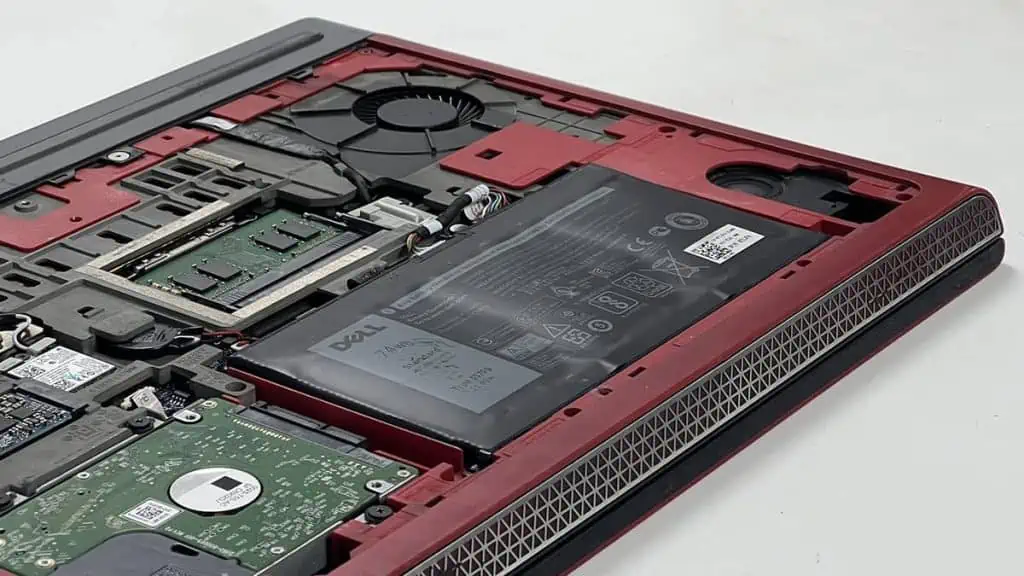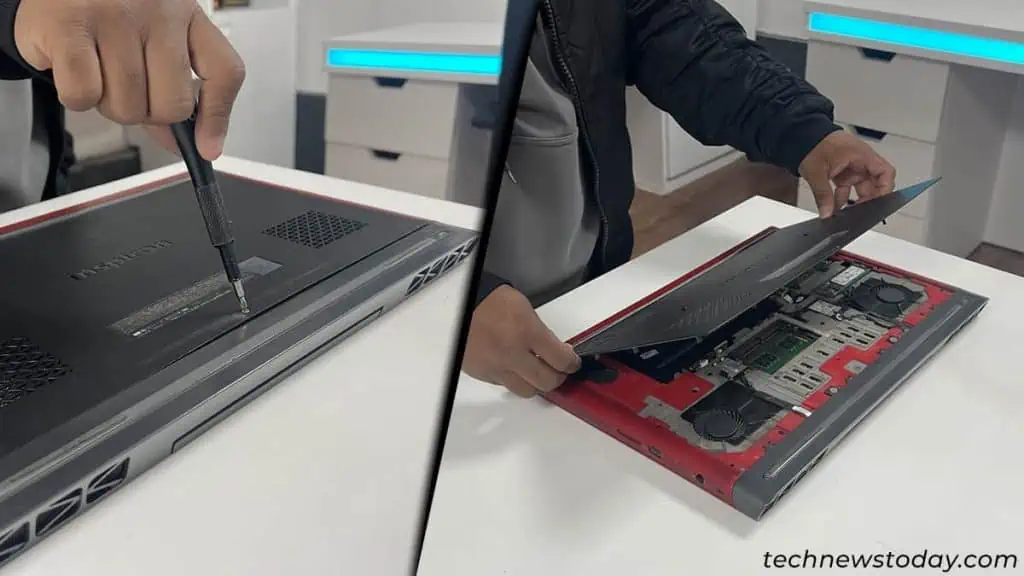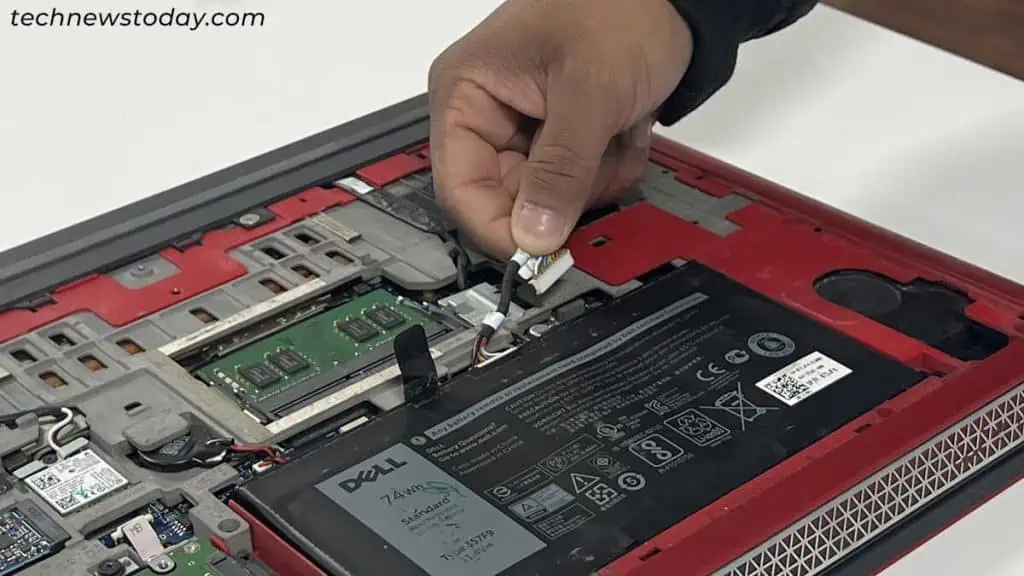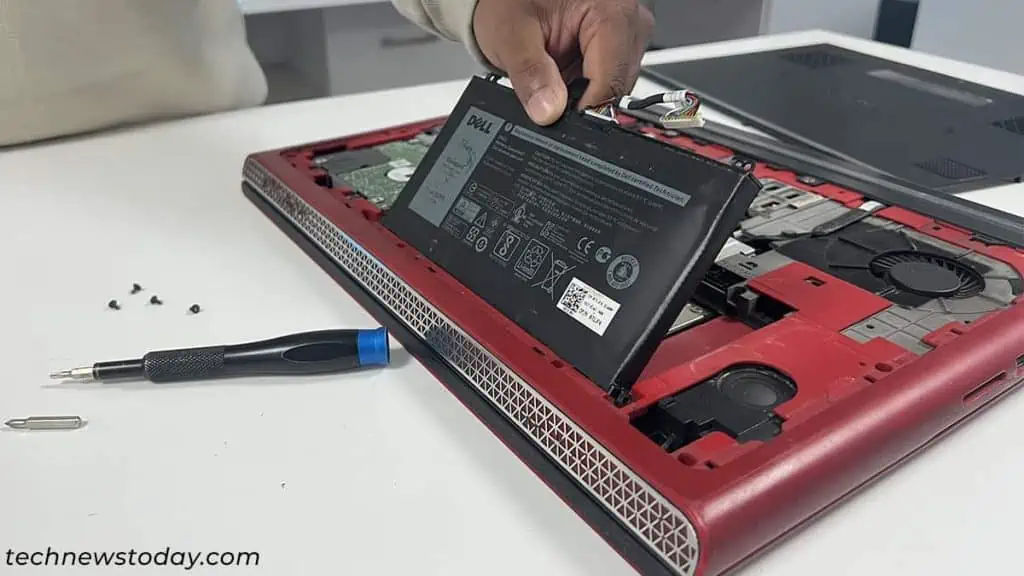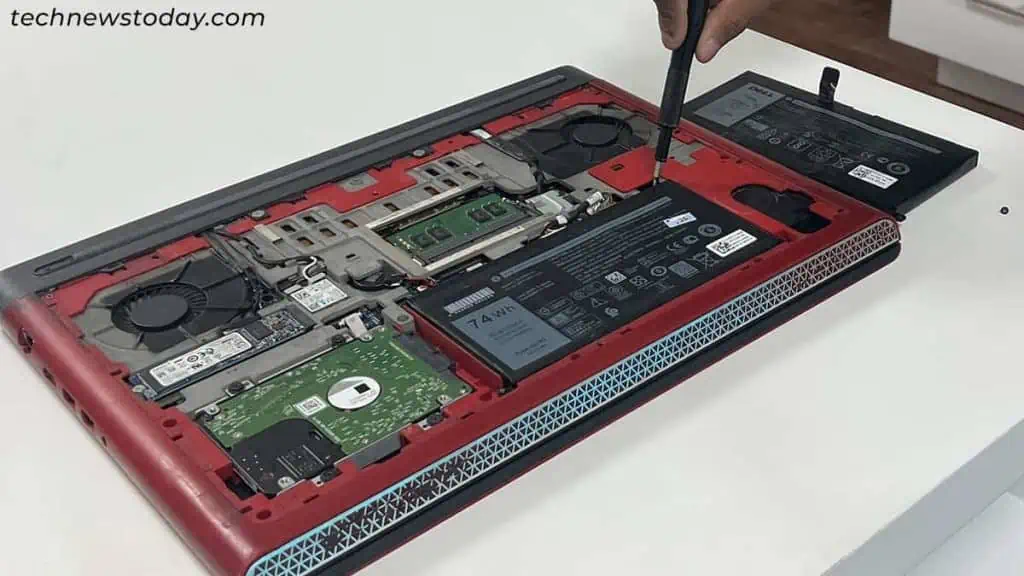Your laptop battery can swell due to any of these reasons:
- Manufacturing defects like the improper size of the cathode-anode separator.
- Physical damage to the battery during laptop movement.
- Faulty overcharging.
- Over the time degradation of electrolyte or cathode-anode separator
In such cases, your battery becomes unusable, and the only viable option is to replace it with a new one.
Remove and Replace the Battery
If your laptop has an external battery, slide the latch/es on the back of the laptop to pop the battery out.
The process to remove an internal battery is slightly complex and differs from one device to another.
If you are stuck, I recommend checking out the disassembly videos for your specific laptop model.
Here, I will be working on my Dell Inspiron 15 7566 laptop to guide you through the general steps.
First, shut down the laptop and lay it on a clean work desk. Then,
- Unfasten all the screws on the back. And remove the back panel.

- Look for the battery cable and disconnect it. Then, unfasten all the screws holding the battery in place.

- Take out the battery. Some other models may use adhesives to attach the battery. In such cases, use the prying tools to gently detach it.

- Now, reverse the above steps to replace the battery with the new one for your laptop model. Try getting a genuine battery if possible.

Dispose of the Battery
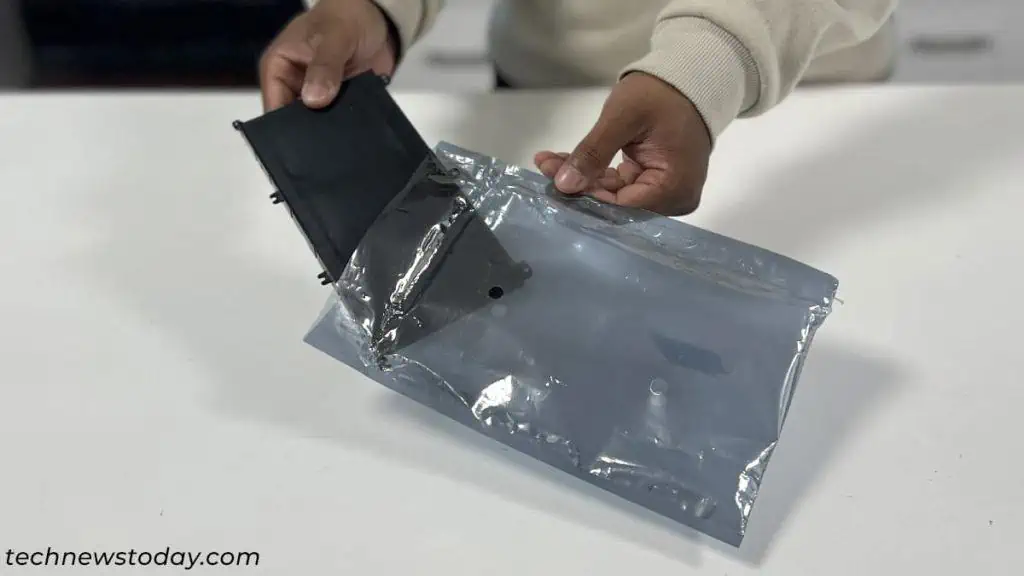
After removing the battery, dispose of it as soon as possible to a battery recycler. You can also send it to recycling solutions under stores like Staples, Battery Plus, and so on.
Keep the following things in mind for safe disposal:
- Don’t drop, puncture, or jostle the battery. The battery may leak harmful gasses and cause serious health and fire hazards.
- Until you drop it off, place it away from flammable objects and inside a metal, clay container, or any fire-rated box.
- You can also use antistatic bags if the swelling is not too much.
- Don’t use other e-waste recyclers due to the potential fire hazards.
How to Prevent Laptop Battery from Swelling?
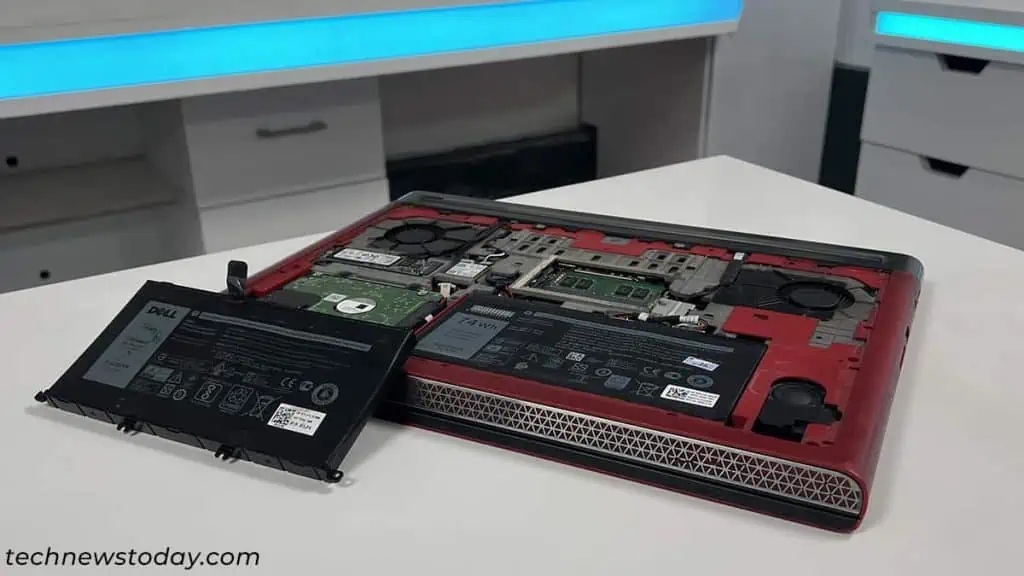
It is not possible to fix a swelling battery. But you can start applying many safe practices to avoid similar issues in the future. Such practices include:
- If your charger gets broken, replace it with a genuine charger with the proper power ratings.
- Don’t keep it plugged in all the time. Having a full charge continuously can stress the battery and affect its lifespan.
- If you have to keep it plugged in, use battery limiting features that set the max battery capacity to 85 or 60%.
- On the same note, avoid having the battery level drop below 25-20% as well.
- When charging, use surge suppressors to protect the charger and laptop from potential power surges.
- Use the laptop in a well-ventilated and clean room on a flat surface to prevent overheating it.
- Use stands or cooling pads if necessary, especially when you’re using the laptop on the bed.
- Regularly clean or service your laptop to avoid any battery and overheating issues.
